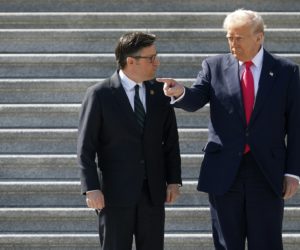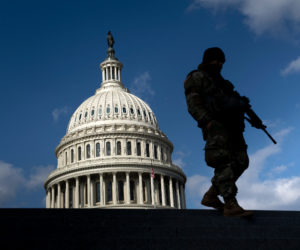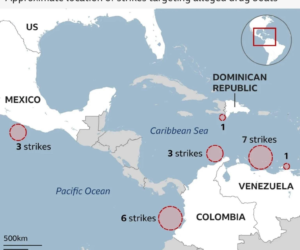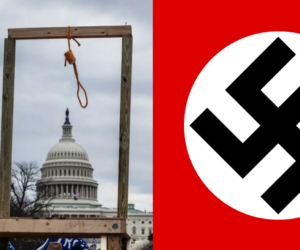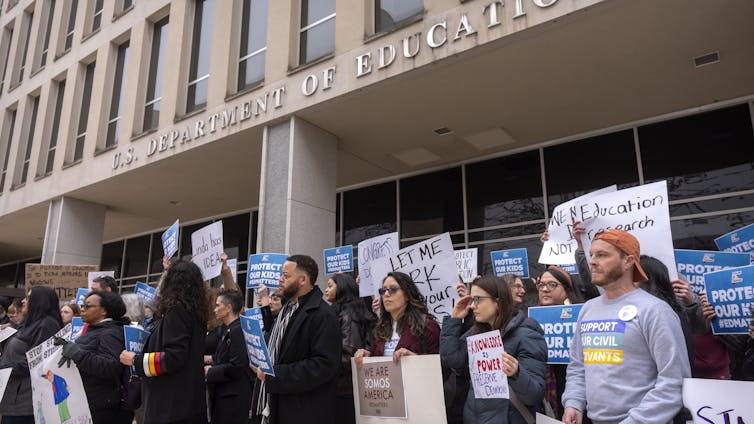
AP Photo/Mark Schiefelbein
The Trump administration was given the green light by the Supreme Court on July 14, 2025, to proceed with mass layoffs at the Department of Education – part of a wider plan to dismantle the agency. In doing so, the conservative majority on the bench overruled a lower court judge that had blocked the move.
While the court didn’t explain its decision – and didn’t rule on the merits of the case – Justice Sonia Sotomayor, one of the three liberal justices who objected, issued a strongly worded dissent: “When the Executive publicly announces its intent to break the law, and then executes on that promise, it is the Judiciary’s duty to check that lawlessness, not expedite it.”
The Conversation has been following the administration’s efforts to take apart the Department of Education since President Donald Trump won the presidential election in November. Here are a few stories from our archives that explain the executive order targeting the department, why the agency has been in the crosshairs of conservatives, and some of the impacts of carrying out the order.
1. Hollowing out education
Trump has promised to eliminate the Department of Education since at least September 2023. What started out as a campaign promise eventually became the executive order he issued on March 20, 2025, released shortly after the administration announced plans to lay off about 1,300 of the 4,000 employees in the department.
“Although the president has broad executive authority, there are many things he cannot order by himself,” wrote Joshua Cowen, a professor of education policy at Michigan State University. “And one of those is the dismantling of a Cabinet agency created by law. But he seems determined to hollow the agency out.”
And that’s what the Supreme Court says he can do while the case plays out in lower courts. Ultimately, Trump’s order creates a lot of “legal and policy uncertainty around funding for children in local schools and communities.”
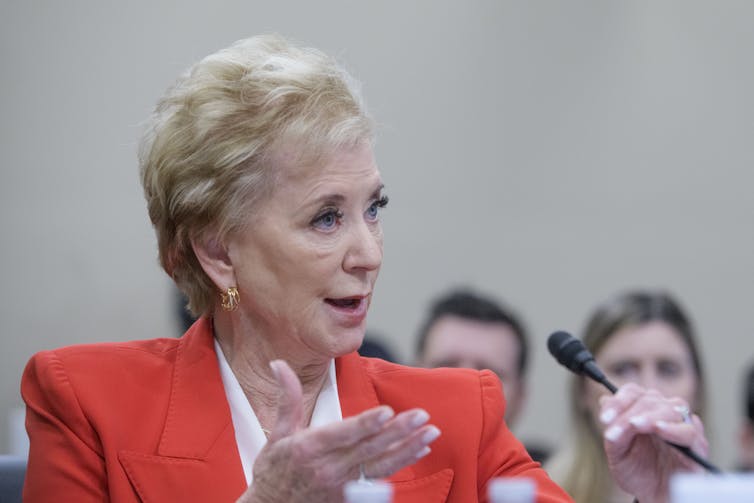
AP Photo/Rod Lamkey Jr.
2. What the education secretary normally does
The person directed to actually carry our the president’s order is the education secretary, Linda McMahon. She has called dismantling the department its “final mission.”
But the secretary – and the department – have many other missions, such as managing students loans and administering Title I funding to help schools serving low-income students obtain an equitable education regardless of their socioeconomic status.
“Every child in the United States is required to attend school in some capacity, and what happens at the federal level can have real-world impacts on students ranging from preschool to grad school,” wrote Dustin Hornbeck, a scholar of educational policy at the University of Memphis.
In his article, Hornbeck explored the key duties of the education secretary and the role of the federal government in education, which he argued will continue even if the Education Department is abolished.
3. Why MAGA targeted the department
So why did Trump decide getting rid of the Education Department was a top priority and worth the legal risks?
Fighting what he perceived as “wokeness” was likely one reason, wrote Alex Hinton, an anthropologist who has been studying U.S. political culture at Rutgers University ? Newark.
“First and foremost, Trump and his supporters believe that liberals are ruining public education by instituting what they call a ‘radical woke agenda’ that they say prioritizes identity politics and politically correct groupthink at the expense of the free speech of those, like many conservatives, who have different views,” he explains.
Trump’s battle against DEI – or diversity, equity and inclusion – is of course a big part of that, but so too are what he and his supporters call “radical” race and gender policies.
Hinton goes on to describe three other reasons – including supposed “Marxist indoctrination” and school choice – he argues that the MAGA faithful want to eliminate the Department of Education.
4. It didn’t begin with Trump
But conservative efforts to gut the department didn’t begin with Trump or MAGA. In fact, the Heritage Foundation, which created the Project 2025 blueprint for remaking the federal government, has been trying to limit or end its role in education since at least 1981 – just two years after the Department of Education was created.
“In its 1981 mandate, the Heritage Foundation struck now-familiar themes,” including closing the Department of Education and ending funding for disadvantaged students, wrote Fred L. Pincus, a sociology professor focused on diversity and social inequality at the University of Maryland, Baltimore County. “And the Heritage Foundation called for ending federal support for programs it claimed were designed to ‘turn elementary- and secondary-school classrooms into vehicles for liberal-left social and political change.’”
The conservative think tank struck similar themes in its Project 2025 playbook, though it went even further in calling out “leftist indoctrination” and “gender ideology extremism,” Pincus noted.

skynesher/E+ via Getty Images
5. Impact on most vulnerable students
After all the already planned layoffs go into effect, the Department of Education will have roughly half the staff it started the year with. That will have a significant impact on its ability to carry out its many tasks, such as managing federal loans for college and tracking student achievement.
The department also enforces civil rights for schools and universities, and that office has been hit especially hard by the job cuts, wrote education professors Erica Frankenberg of Penn State and Maithreyi Gopalan of the University of Oregon.
“The Office for Civil Rights has played an important role in facilitating equitable education for all students,” they wrote. “The full effects of these changes on the most vulnerable public school students will likely be felt for many years.”
This story is a roundup of articles from The Conversation’s archives.![]()
Bryan Keogh, Managing Editor, The Conversation
This article is republished from The Conversation under a Creative Commons license. Read the original article.

